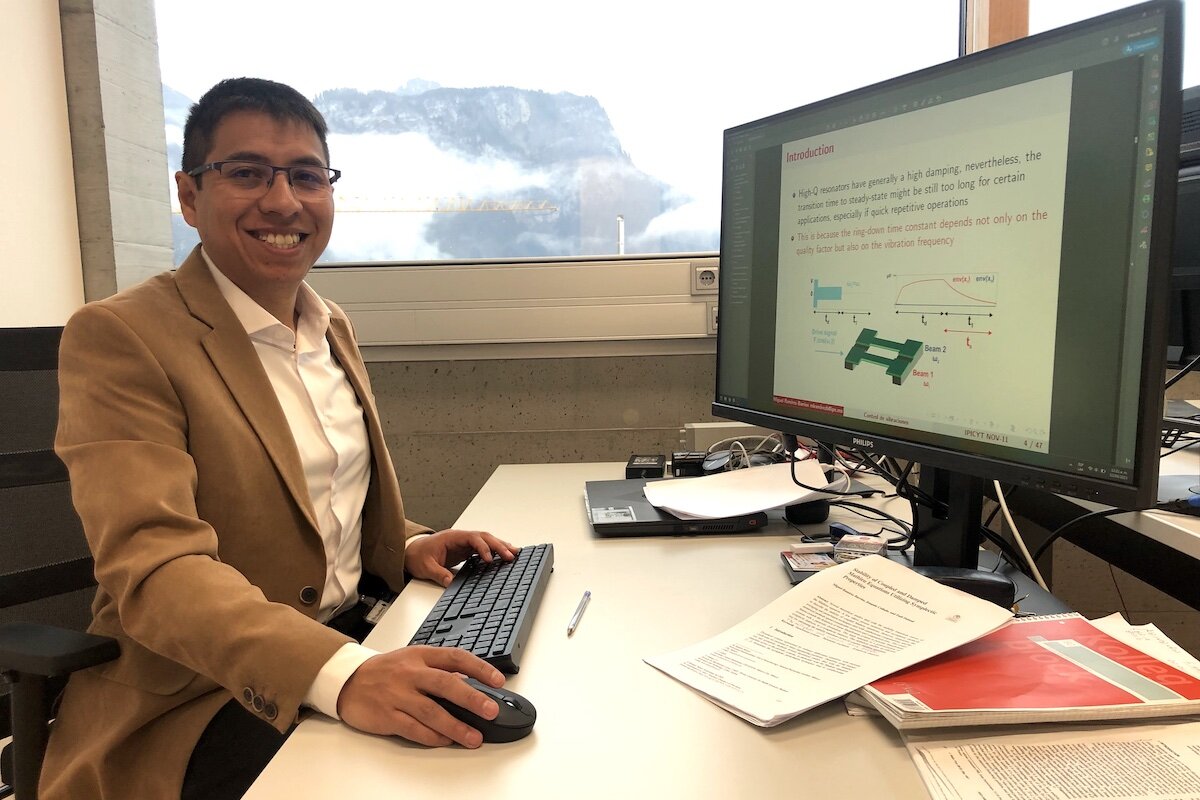Cross-border research
Mathematician and engineer Miguel Ramírez-Barrios is exploring new areas of vibration engineering under a fellowship from the Austrian Academy of Sciences.

The Research Centre Microtechnology is currently stronger by one researcher: Ass.-Prof. Dr. Miguel Ramírez-Barrios from Mexico is working at the FHV for half a year and is thus the first researcher in Vorarlberg to be funded by the Austrian Academy of Sciences via a JESH grant. A cooperation between the research centre and the University of Innsbruck facilitates the exchange.
For nine years, Miguel Ramírez-Barrios has been teaching as a lecturer at the National Polytechnic Institute in México City; for the past four years, the applied mathematician has been contributing his expertise in the analysis and control of mechanical, dynamic systems to research there. "Since the summer of 2018, I have been working on and off with Fadi Dohnal in the field of nonlinear dynamics. That's how the idea of this research project came up. The aim of the project is to develop techniques for minimizing vibrations in specific devices such as circuits or sensors," Miguel Ramírez-Barrios tells us.
Acceleration of MEMS sensors
Certainly, he is working at the FHV on new methods that significantly accelerate the dynamics of microelectromechanical systems known as MEMS. Typically, particularly accurate MEMS sensors have little damping to respond to the smallest disturbances. This property gives them very high sensitivity. However, the weak damping also means that MEMS sensors have sluggish transient dynamics, i.e. they take a long time to reach a steady state for reliable measurement. Together with Prof. Dr. Fadi Dohnal, head of the research centre microtechnology, a possibility was found to accelerate the transient dynamics by a multiple without degrading the sensor sensitivity by using modern methods of nonlinear dynamics. This work builds on the findings in their publication "Enhanced vibration decay in high-Q resonators by confined of parametric excitation."
Multi-faceted goals
In addition to successfully applying the theory to MEMS and rotordynamic systems, the research results will be published in international journals. "The numerous journal publications of the microtechnology research centre are a major contribution to why the FHV is one of the most research oriented universities of applied sciences in Austria," emphasizes Fadi Dohnal. Miguel Ramírez-Barrios is also keen to strengthen cooperation between universities in Austria and Mexico. He hopes to supervise an Austrian student in Mexico in two or three years. The project is also very important to him personally. He would like to gain expertise in this field and one day head the electronics laboratory at his home university.
Great support
The Mexican has been in Vorarlberg for a good two months now. Culture shock? Not at all. Perhaps also because the Austrian culture was not completely foreign to him after already two summers in East Tyrol. He particularly appreciates nature and the peace and quiet, which also makes working easier: "In Mexico City it's noisy and there's a lot of traffic. That can sometimes be stressful. Here in Vorarlberg, I even have an office with a view of the mountains." He is also pleased with the helpfulness and friendliness in this country and at the FHV: "I was given a very nice welcome. From the very beginning, people have supported me here. I would like to thank everyone very much for that. I'm looking forward to the coming months."
Further information:
April 2023